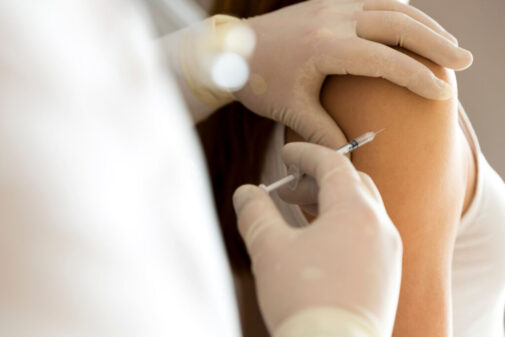Are hot flashes in your future?

There’s a good chance the empowered person describing hot flashes this way is a woman who’s been experiencing this biological rite of passage that affects many women.
If you haven’t experienced one, a hot flash is a sudden feeling of warmth that can range from a mild warm feeling to a feeling that part of your body is red hot, and you may suddenly find yourself drenched in sweat. The feeling may last for a few minutes and can come any time of day or night. The flashes can even routinely disrupt sleep for some.
Who can get hot flashes?
This phenomenon can be part of a woman’s menopausal transition, which commonly happens between age 35 and 55. About 75% of middle-age women experience hot flashes as part of menopause.
A research project called the Study of Women’s Health Across the Nation (SWAN) has followed the physical, biological and psychological health of a diverse group of about 3,300 women across the country for the past 22 years.
The project was sponsored by the National Institutes of Health. Researchers found there’s a lot of variety in how the symptoms affect different women, but generally, women fit into one of four symptom categories, with about 25% of women in each category.
- The fortunate: This group doesn’t experience hot flashes, or they experience only a few flashes near the end of the menopausal transition.
- Early birds: This group begins to experience hot flashes long before menopause — five to 10 years before their last period. The hot flashes typically stop around the time of the final menstrual cycle.
- Late starters: This group experiences their first hot flash after their final menstrual period. Hot flashes can continue for years.
- Super flashers: These women begin hot flashes relatively early, similar to the early birds. And they continue to experience the symptoms well past menopause — in some cases 15 years or more.
The median length of time from start to end of the symptoms is 7.4 years. Half of the women experienced symptoms less than that length of time, and half had symptoms that lasted longer.
With the super flashers, the earlier the hot flashes started, the longer they were likely to continue after menopause. Hot flashes can be part of a woman’s life for 14 years.
Women of all ethnicities are part of each group, but the researchers did find some overall commonalities:
- Black and Hispanic women experienced hot flashes for longer periods in their lives than white or Asian women. At this time, it’s unclear if the differences are due to genetics, diet or reproductive factors such as the number of children a woman has.
- Women with longer-lasting symptoms tended to have less education. They also experienced more stress, depression and anxiety. It’s not clear if emotional issues prompted hot flashes or if hot flashes resulted in more emotional issues.
- The fortunate were often Asian and women in better health.
- Early birds were more likely to be white and obese.
- Late starters tended to be smokers.
- Super flashers were three times more likely to be African-American, but they represented only 40% of that group. The other 60% were from other groups, including white women and Asian women. Women in the super flasher category tended to be in poorer health or were regular alcohol users.
That said, the researchers emphasized that, although they did find trends in each category, each of the categories included women of all races, ethnicities, body weights and health categories.
How to relieve discomfort from hot flashes
Menopause is a natural process in life. You really don’t need to treat it. However, if your symptoms are leaving you very uncomfortable, visit with your health care provider. Hot flashes, night sweats and irregular periods may have a cause other than menopause, and you should be aware of possible underlying medical issues.
If the cause of your hot flashes is menopause, your health care provider can discuss options that may fit your situation, such as hormone therapy.
Here are some practical steps you can try on your own to relieve hot flashes:
- Sleep in a cool room.
- Dress in layers that can be removed at the start of a hot flash.
- Have a drink of cold water or juice when you feel a hot flash coming on.
- Use sheets and clothing that let your skin “breathe.”
- Don’t smoke.
- Keep a written record of what you were doing just before a hot flash started. This might reveal hot flash triggers that you can try to avoid.
- Exercise. It can improve your quality of life and may help with hot flashes. Exercise will also help reduce your risk of heart disease and osteoporosis.
- Lose weight. This may lower your risk of hot flashes or their intensity.
- Try slow, deep breathing, known as relaxation breathing, to help reduce hot flashes.
If these steps don’t help and hot flashes are still having a negative impact on your comfort, visit with your health care provider.
Related Posts
Comments
About the Author
Paula Carlton, NP is a Nurse Practitioner at Aurora Health Center in West Bend, WI.

















